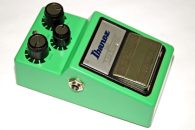
So you to know how to learn acoustic guitar but not sure where to proceed? Well you’re in the right place as this is a step by step guide for the beginner. First you need to tune your guitar. Once it’s done, you’re ready to play.
Contents
- 1 Step 1. Hold the guitar properly
- 2 Step 2. Chords and single notes
- 3 Step 3. Open chords
- 4 Step 4. Set your fingers on the guitar neck
- 5 Step 5. How to strum
- 6 Step 6. Play different rhythms and patterns
- 7 Step 7. How to read tabs
- 8 Step 8. Practice guitar riffs
- 9 Step 9. Play various shapes and notes
- 10 How to Play Simple Guitar Chords
- 11 How to Play E Minor
- 12 Should You Strum or Use a Pick?
- 13 Video Guide for Playing an Acoustic Guitar
- 14 The Guitar String Note Explained
- 15 To avoid confusion between notes and chords:
- 16 How to Correctly Fret Chords
- 17 Conclusion
Step 1. Hold the guitar properly

- To play casual, put the guitar on your dominant leg. This technique won’t tire you out as quickly.
- For a classical style, position the guitar on your non-dominant leg. This method provides you with greater control over the neck.
- Do not slump on your seat as it limits the movements you can do.
- Do not sit on an armed chair. This restricts your movement and forces your elbow to tuck below your torso. that’s not good.
- Do not play guitar on a high stool as the tendency is for your thighs to move down, moving the guitar further from your body.
Either way, position the guitar near your body and make certain that it is upright. If you’re standing up, wear a guitar strap and the instrument should be near your chest.
Step 2. Chords and single notes
Chords refer to when you play at least a couple of notes on different strings to produce a single sound. Chords comprise an acoustic guitar’s rhythm section, while single notes are for guitar solos.
Step 3. Open chords
Open chords are played close to your guitar tuning knobs. The most widely used chords for beginners are Dm, Em, Am, D, E, G, A and C.
Don’t try and learn all the open chords at once. Start with a couple like A major and E minor so you’ll get the hang of it. When you look at a chord chart the left string points to your guitar’s topmost string. To make remembering easy, keep in mind the strings are numbered 1 to 6 from bottom to top, with the bottom number 1.
Step 4. Set your fingers on the guitar neck

Step 5. How to strum
Hold and press the strings on the open chord shape you want to play. Use your other hand to strum. Apply some force to get more action. Press harder and hold the strings more firmly to increase the chords’ action. Move your finger farther from the neck fret if the string buzzes.
Check your chord chart and look for an X or an O on the strings. That tells you what strings have to be strummed and what you must not.
With an E minor, strum all the strings, and for an A major, strum them all except the top.
- When strumming a guitar, there needs to be a swinging movement emanating at your elbow. Motion from your wrists need to be minimal as majority of the strumming must be from your elbow.
- Make certain your wrist is straight and not set at an angle.
Step 6. Play different rhythms and patterns
This is key when you study how to play acoustic guitar for beginners step by step. When you’ve learned abut open chords, it’s time to strum at varying rhythms and tempos.
Acoustic guitar rhythm is determine by your strumming pattern and how long you press the notes. Start with a beat of 1-2-3-4 or the 4/4, whereby the upper figure tells you the number of beats in the measure.
Step 7. How to read tabs
If you don’t yet know how to read sheet music, try tabs instead. It is easier than reading sheet music as the tab tells you where to position your finger on a fretboard. Tabs are useful for beginners, but you’ll need to study sheet music if you want to use other musical instruments.
Tabs come with six lines that symbolize your strings, and the numbers indicate where you should position your fingers. The numbers re representative of the fret where you have to press the string. 3 means third fret, 2 means second fret, 1 means first fret etc.
If the numbers are progressive, it signifies that you have to pick the note and hold the first individual fret. Repeat this with the succeeding fret. If the numbers are set on the same vertical line are to be played together. Remember that tab reading is left to right.
Step 8. Practice guitar riffs

There are a lot of websites to search for tabs. Just type the song title and artist and you will see its tabs, chords and notes. Follow the tab and play your guitar in front of your computer, or you can print the tab.
Step 9. Play various shapes and notes
Once you know how that song’s notes are played, break the song into sections and work on each part. Work on the rhythms and focus on the areas you have difficulty playing. For some guitarists, this is more effective than trying to master the song as a whole.
After you have learned how the song is played, play the actual tune and strum alongside it. Keep up with the tempo. If you make mistakes, check the tab and try again. Make sure also your guitar is tuned before playing.
How to Play Simple Guitar Chords
To play the G6 chord:
- Position your second finger on the 3rd fret at the low E string
- Position your first finger on the 2nd fret at the A string
- Strum all the strings
To play C major 7:
- Set your second finger on the 3rd fret A string
- Put your 1st finger on the 2nd fret D string
- Strum the A string
How to Play E Minor
- Position your 1st finger on the 2nd fret at the A string
- Position your 2nd finger on the 2nd fret at the D string
- Strum every string
Should You Strum or Use a Pick?
This is a matter of personal preference. Some find it easier to strum while others like to play guitar with a pick. Even if you prefer to strum however, it’s still a good idea to learn how to use a pick.
Here’s how:
- Make a thumbs up sign
- Put the pick above your index finger. The pick’s pointed edge should be directed towards you.
- Put your thumb down over the pick.
That is how to hold and use a pick. It will take some getting used to, but with constant practice you’ll realize how effective a pick can be.
Video Guide for Playing an Acoustic Guitar
If you’d rather watch a demonstration, here’s an absolute beginner’s guide to learning how to learn to play guitar by yourself.
The Guitar String Note Explained

- The 6th string is the thickest. In regular guitar tuning this is set to E. It is the deepest/ lowest and often called the low E string.
- The 5th string is known as the A string since it is tuned to A.
- The 4th string is the string as it is tuned to D.
- The 3rd string is called the G string as it is tuned to G.
- The 2nd string is called the B string as it is tuned to B.
- The 1st string is called the high E string. It is the thinnest.
To avoid confusion between notes and chords:
- A note is a single pitch. Pluck a string, it vibrates, that’s a note.
- A chord is when you play several notes together.
How to Correctly Fret Chords
- Use your fingertips to fret. Do not use the fleshy area. By using your fingertips there is optimum space between every string. This allows notes to come out clear, whereas using the fleshy part of your finger produces a muffled sound.
- Keep practicing until the notes are clean and clear.
- Position your fingers on the center of the frets, not on top. Set your fingers between the gap. Doing this prevents notes from deadening and allows the sound to emerge clean.
- In most chords your thumb has to be pointed to the ceiling and in the center of the neck.
Conclusion
The steps to knowing how to learn acoustic guitar is not that hard, but it does require patience. Keep practicing and you’ll get better. It’s not about how much talent you were born with but how much you’re willing to practice that makes the difference.








